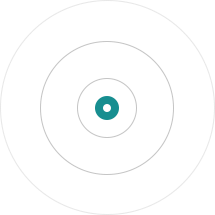Municipal solid waste (MSW), also known as municipal solid waste, refers to solid waste generated in the daily life of urban residents or in the activities that provide services for the daily life of the city.
Urban garbage contains a large amount of high calorific value components. Using domestic garbage to prepare RDF fuel is a good solution to the problem of resource utilization of domestic garbage. The process of preparing RDF fuel from domestic garbage includes crushing, sorting, drying, adding additives, etc. The molded RDF has the characteristics of high calorific value, stable combustion, convenient transportation, easy storage, and low secondary pollution.
The RDF processing and production process first crushes domestic garbage, sorts out combustibles, then adds additives to dry, and finally extrude and mold to make granular RDF fuel.
With the increasing energy shortage in recent years, China has vigorously carried out new technology research and development innovations to improve the efficiency of dryers and the application of biomass energy, and new garbage dryers have been rapidly promoted and popularized. The trend of environmental protection will continue to meet the needs of sustainable green development, and solid waste drying equipment will usher in a peak of development in the future.






Solid waste is actually a useful resource. For example, municipal solid waste contains a large amount of organic matter. After processing such as sorting and drying, it can be used as an auxiliary fuel for coal, and it can also be pyrolyzed to produce artificial fuel oil. Biogas and high-quality waste can also be produced by microbial degradation fertilizer. In addition to recycling useful metal materials, non-metal materials, and energy, solid waste recycling is mainly used to produce building materials.
This system smashes material first, which is convenient for subsequent dehydration. After dehydration, it dries the dehydration materials, which decreases the drying heat consumption. In addition, during the high-temperature drying process, it inactivates the harmful microbe inside the material. Setting up individual sterilization technology is not required, which simplifies the material processing process, and saves the energy required in individual sterilization.



| Specification | Input Capacity(t/d) | Output(t/d) | Evaporation Capacity(t/h) | Raw Material Moisture(%) | Dried Material Moisture(%) | Drying temperature(℃) | Total Power(kw) | Total Weight(kg) | Area |
|---|---|---|---|---|---|---|---|---|---|
| DLJG1208 | 36.0 | 18.0 | 0.75 | 65±5% | 30%(adjustable) | 350-450℃ | 32 | 15000 | 5m*14m |
| DLJG1408 | 43.2 | 21.6 | 1.05 | 40 | 17000 | 5m*14m | |||
| DLJG1610 | 62.4 | 31.2 | 1.30 | 55 | 21500 | 6m*16m | |||
| DLJG1910 | 72.0 | 36.0 | 1.50 | 75 | 23000 | 8m*16m | |||
| DLJG2010/3 | 139.2 | 69.6 | 2.90 | 95 | 26500 | 8m*16m | |||
| DLJG2210/3 | 153.6 | 76.8 | 3.20 | 100 | 28500 | 8m*16m | |||
| DLJG2510/3 | 177.6 | 88.8 | 3.70 | 125 | 370000 | 10m*16m | |||
| DLJG2512/3 | 216.0 | 108.0 | 4.50 | 145 | 41000 | 10m*18m | |||
| DLJG2912/3 | 261.6 | 130.8 | 5.45 | 165 | 45500 | 10m*20m |

